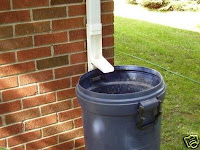Have you ever wondered what ingredients are used in your laundry detergents? If you haven’t you should, just think at least 95% of your day your body and the bodies of your family members are in contact with clothing and linens that have been soaked in detergent. So what is in laundry detergents? If you are using non-natural laundry detergents the ingredients contain carcinogenic, hormone disruptors, and other hazardous air pollutants.
In a recent study by the University of Washington,
researchers found that 25 organic compounds including seven hazardous air
pollutants were released from laundry that was washed in non-natural detergent.
Two of the chemicals are listed on the Environmental Protection Agency’s list of
cancer causing chemicals. If you are like me who runs at least 7 loads of
laundry a week you are freaking out! How does this happen? Well, laundry
companies are not required by law to list their ingredients. They also aren’t
regulated like other products because they are not applied directly to human
skin-even though we all know they are directly touching human skin constantly.
“Optical Brighteners” are used in non-natural laundry
detergents. These are synthetic chemicals that are used to make your clothes
“glow” under ultraviolet light. Your clothes look bright, but they are really
deteriorating. These brighteners are built to stay on your clothes; they build
up and prevent your cloth diapers from absorbing and your military uniforms glow
like the sun when looked at with night vision. They also rub off onto your skin causing a
rash that looks like a sun burn, and seep into waterways and build up inside
fish.
Phosphates are often found in non-natural detergents.
These phosphates work as a super-charged
fertilizer for algae in your washing machine-ever have stinky towels? Chances
are it is due to algae growing in your washer. If you use these products they
can build up in your washer in your tubes, in the pump, in the door seal! Just
about everywhere! If it isn’t cleaned up your stinking clothing will have to be
tossed and so will your washer.
All of these chemicals find their way into the
environment and end up in the water that we drink, the soil where our veggies
are growing and into the animals that we eat. They are also constantly being
released into the air from your dryer vents and finding their way into our
atmosphere.
So now that we
know how bad laundry products can be what do we do? First, check your detergents
ingredients. If it contains benzene and acetaldehyde dispose of it with your
other hazardous materials, these two chemicals are cancer causing. If it contains optical brighteners or
phosphates give it the old heave-ho! If you can’t find a list of ingredients for
your laundry detergent that should be a red flag, they have a reason for not
showing you what it is made of. The easiest solution is to find yourself a
natural laundry detergent, specifically one that isn’t afraid to tell you what
it is made of. The University of Washington recommends that you don’t use more
detergent than you need. Most of the time you are just washing sweat and
fragrance out of your clothes, this shouldn’t require a ton of detergent. They
also say to, “Wash only full loads of laundry and with cold water. Making the
switch to the cold cycle will save about $60 a year on your power bill because
you'll be giving the hot water heater a break."
If you are interested in making the change to natural laundry detergent (and I think you should) check out http://www.ahappygreenlife.com/ and our new laundry wash line that is safe for your clothes and skin!
-Amanda
If you are interested in making the change to natural laundry detergent (and I think you should) check out http://www.ahappygreenlife.com/ and our new laundry wash line that is safe for your clothes and skin!
-Amanda




